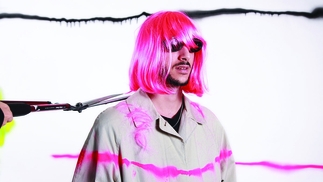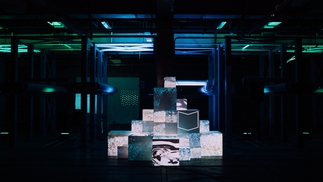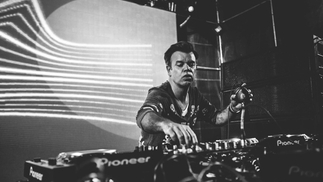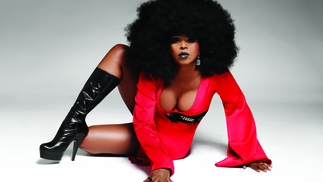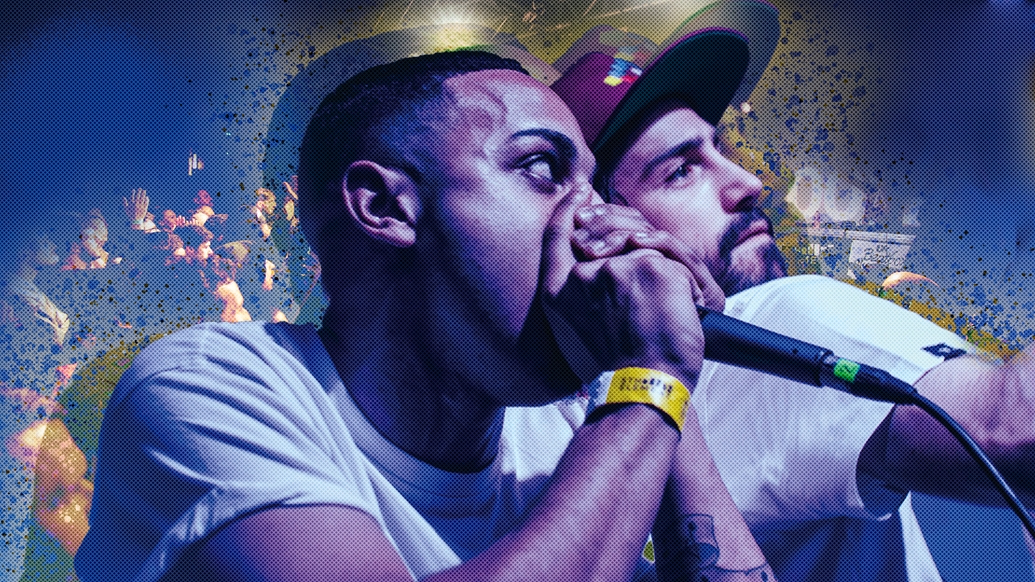
Outside the box: the story of UK beatboxing
Since beatboxing first arrived on British shores from the US in the ’80s, the passion and innovation of UK acts have taken the art to unimaginable heights. Jak Hutchcraft charts the development of the scene, speaking to boundary breakers and educators, and finds it in ruder health than ever
DJ Mag is sat in Wembley Arena surrounded by thousands of singing children. We’re at a Young Voices event — the largest school choir in the world. After an epic rendition of ‘Titanium’ by Sia and David Guetta belted out by 4,500 primary school kids, four new characters appear onstage. They go by the names MC Zani, Ball-Zee, Hobbit and Bass6. They start beatboxing over the huge PA system; the crowd erupts.
Born from the NYC hip-hop scene in the early ’80s, beatboxing began as an instrumental backing for rappers. Throughout the decade, it grew into an art form in its own right, with pioneering artists such as Doug E Fresh, Buffy The Human Beatbox and Biz Markie becoming well-known across the growing hip-hop world. They’d imitate the infectious breakbeats, vinyl scratches and fuzzy Moog synths that were prevalent in the genre at the time. In the ’90s, beatboxers such as Rahzel, also from New York, took things to another level. He reached ears all over the world with his seemingly-impossible singing and beatboxing technique. This audio illusion featured on his now legendary 1999 track ‘If Your Mother Only Knew’ — a kind of “WTF” sound clip that went viral throughout the file-sharing forums of the early 2000s internet. He raised the bar in a way that’s still felt in beatboxing over 20 years later.
In the mid-1990s, a teenager from West Sussex called Lee was getting into hip-hop and street culture. With Smif-N-Wessun, EPMD and Skinnyman on heavy rotation, he began rapping under the name Killa Kela. He joined a collective of local friends called 360 Physicals, made up of like-minded rappers, DJs, breakdancers and graffiti writers. Kela had been beatboxing for years at home, but had never taken it too seriously. “At the time, there were no British beatboxers, in my mind,” he remembers. “The one [US] beatboxer that really stuck out to me was Biz Markie. I heard him when I was about 15 or 16 do this live performance on Tim Westwood’s show. It was his Cold Chillin’ tour in 1989. I was like, ‘I can do that!’”
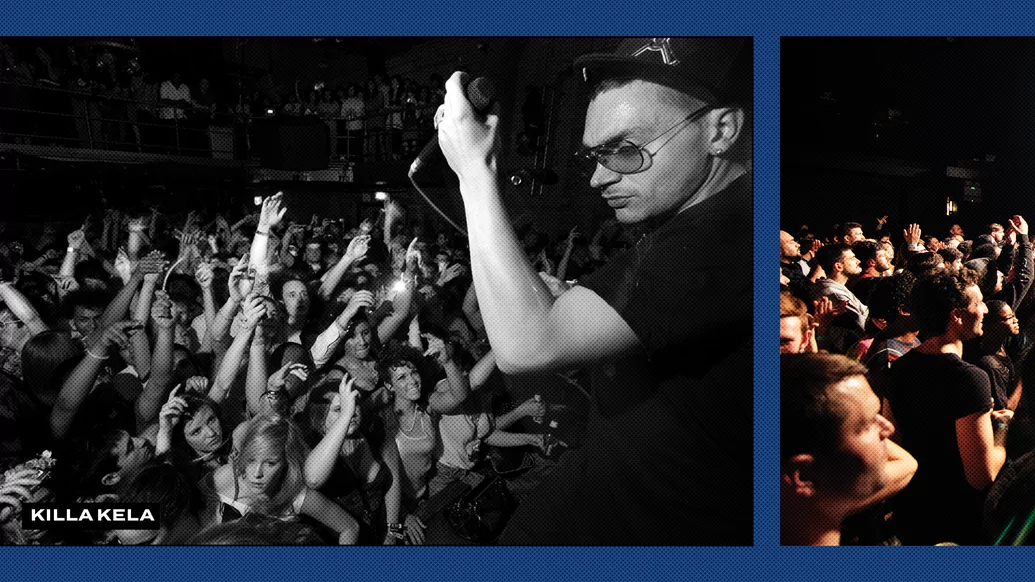
After rapping with his crew around the south of England in 1998, Killa Kela's big moment came one fateful night when he was 18 years old: it was at a 360 Physicals gig at a club called the Alley Cat in Reading. “Just by a complete fluke of opportunity, the power went down at this show,” he recalls. “My mate was saying, ‘This guy can beatbox!’ So I jumped on the mic, and the response blew my mind! When I got off the stage, it was like C-3PO going into the Ewok Village [laughs]. Then it dawned on me — this ain’t really been seen by anybody here.”
Shortly after, Rahzel’s vocal wizardry found its way to Lee’s eager ears. “Rahzel took it to a level of international attention. So I thought, ‘if I’m going to take this seriously, I need to come up with different sounds, not like any of these ones I’ve heard’,” he explains. “It’s one thing being able to mimic, but I wanted my own sound palette. So that’s where it all began for me.”
By 2005, Kela had joined both the DJ group Scratch Perverts and the legendary Rocksteady Crew; he got signed by Sony, toured extensively with the likes of Busta Rhymes and Redman, and collaborated with dance acts such as Basement Jaxx. By 2010, he’d performed with Prince at the O2 arena, and on the main stage at Glastonbury.
Although Kela is now widely remembered as the first active beatboxer in the UK, he soon wasn’t the only one. From the trail that he blazed, others emerged feeling validated and ready to make some noise. Armed with a secret skillset that they’d cultivated in their bedrooms, a small but connected community formed in the years following the Millennium. Autodidacts from all corners of Britain would host events and chat on forums such as Humanbeatbox.com — sharing techniques, battling and making music together.
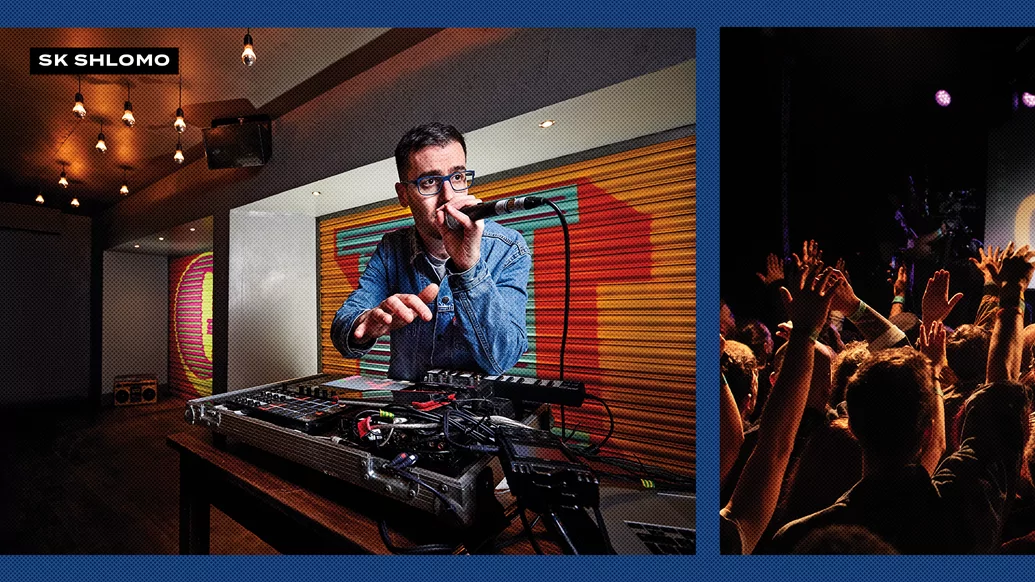
“The very first [UK] beatboxing events happened in 2002. They were called King Of The Jam,” says world-renowned beatboxer SK Shlomo (formerly Shlomo). “It was a meet-up in St. James’s Park in London. The winner of the tournament got a pot of jam. It was Bonne Maman jam, they weren’t fucking about!” This meet-up became instrumental for the scene’s biggest names — including Beardyman, Splinter and Tyte — to network, battle and hone their craft.
SK Shlomo grew up in Buckinghamshire and has achieved huge things with his music, including collaborating with Björk on a song performed at the 2004 Athens Olympics. In the beginning, however, he simply used beatboxing as a way to calm his brain. “I got diagnosed with ADHD at age 37, and it all just made so much sense to me,” he explains. “As a kid, [beatboxing] would give me this grounding sense of safety. When you have ADHD, you can really easily get overwhelmed, but having something that’s continuous and predictable, like music, makes you feel okay. If you can dance to the rhythm, you know where to go next. It was a way for me to channel that kind of anxiety into something that felt right, and so it was my own little self-care thing.”
In a golden moment in the growth of UK beatboxing, a 19-year-old SK Shlomo appeared in an episode of Eastenders in 2003, performing with his Drool Skool crew. It was around this time that he started what would become the biggest date in the British beatboxer’s calendar — the UK Beatbox Championships. “There was this real network building in the UK. I had more gig offers than I could do, and I was like, ‘what if I create an infrastructure for this and an official space where you can find beatboxers?’ So I founded a beatboxing agency,” he remembers.
At the time, he was touring with UK rap group Foreign Beggars.“Then through that, I put on a beatbox competition in Leeds, and it sold out straight away. Then that’s what evolved into the UK Beatbox Championships.” The tournament has gone on to get Arts Council funding and has been hosted at London venues such as Clapham Grand, Scala and Battersea Arts Centre, the latter of which is also home to the BAC Beatbox Academy, a free evening school that gives budding beatboxers the opportunity to learn from the pros.
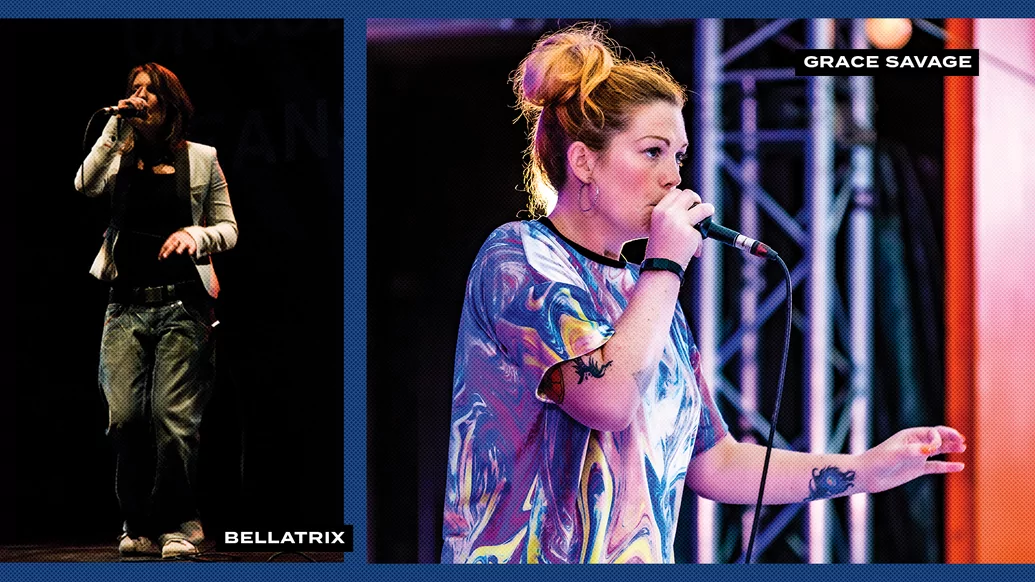
"What I am most interested in for our community moving forwards is to reimagine a space that is inclusive, safe and accessible for everybody.” - Bellatrix
Unlike the US, the biggest beatboxers in the UK haven’t strictly come up through hip-hop. In 2003, a 14-year-old called Grace began absorbing the music and culture around her in the West Country. “I started being introduced to beatboxing, and it was very specific to my geographical location,” she explains. “There’s a massive hip-hop scene in the West Country, in Bristol and Devon, but there’s also huge drum & bass and electronic music scenes.”
She goes on to reckon the prevalence of grime, drum & bass and dubstep in British beatboxing is what sets it apart from the US. “If I wasn’t living in Crediton, in mid-Devon, I would never have become a beatboxer. There just happened to be a lot of beatboxers around me.”
Grace soon started performing as Grace Savage, and has since won the UK championships four times, incorporating singing, instruments and Loop Stations into her music. In 2015, they did a world tour with the ballet dancer Sylvie Guillem, performing together at the London Coliseum and the Sydney Opera House.
One of Grace’s main inspirations and mentors was a school friend called Bellatrix (the two also make music together in a beatbox tag team called BURD). Now rightfully celebrated as a titan of the UK beatboxing scene, Bellatrix paved the way for women, non-binary and trans beatboxers. They were dubbed the 'first professional female beatboxer in the UK', winning six different awards at the UK championships, and even appeared on the BBC breakfast sofa back in 2012. They now identify as non-binary.
“I am someone who brings things in that are difficult to look at,” Bellatrix says. “I think it’s important to name that, although in many ways the beatboxing community is wonderful, we must recognise that the opportunity to thrive is only really available to non-disabled, cis-gendered white men.”
With the attention they’ve gained over almost 20 years touring the world and winning awards, they now want to shine a light on important issues around diversity within the scene. “The British beatboxing scene is perversely a very white space,” they explain. “We’re talking about an art form that has its roots in hip-hop, which is a Black culture. It is also a heavily male-dominated space, that is absolutely not nurturing for women, non-binary and trans people. What I am most interested in for our community moving forwards is to reimagine a space that is inclusive, safe and accessible for everybody.”
Another artist coming at it from a different angle is Reeps One from Walthamstow. “I was never really a hip-hop head,” he tells us during a working holiday in LA. “When I started beatboxing, it was the very beginning of grime and early dubstep culture, and also IDM culture like Squarepusher and Aphex Twin. They were always my influences. The more complex and darker elements of electronic music.”
His artistic output in recent years has been more centred around conceptual performance art and scientific research than it has music. He’s currently creating ‘Voice Gems’, which are sculptured gemstones made from the unique fingerprint information stored in the human voice. He also created (and battled) an AI “second self” with the help of Nokia Bell Labs, and has had three artist residencies at Harvard University. “There is an uncharted aspect of the voice, and it isn’t finished in its journey,” he explains. “Beatboxing in 2022 is all about exploring every single possible corner of what our potential is. Our voice is such a fundamental part of our bodies and our minds, and our connections with the world.”

From up north we have quite a different story. Kimmy Beatbox was 22 when she first decided to get a mic and portable amp, and boldly head out into Manchester city centre. “I saw a busker beatboxing on Market Street in Manchester, and I was like, ‘what on earth is that?’ He was sick!” she explains. “I said, ‘fuck it, I can try that’.”
She originally busked with her friend singing alongside, before trying it solo. As her confidence and her skillset grew, she went from busking one day a week to six, from Manchester to London and Bristol. “Busking is crazy. There’s no pressure, because no one bought tickets to come and see you,” she tells me. “It opened so many doors for me. You never know who’s walking past, especially in London. When I go on Oxford Street, people just drop their business cards, and that’s how I got most of my gigs. It’s definitely how I got my following on Instagram. It also branches you out to parts of the world that you wouldn’t necessarily reach otherwise, because there’s so many tourists in London. I have people from all over the world saying, ‘Oh, I’m coming from Mexico to London and I can’t wait to come and see you!’”
She goes on to recall the time somebody from Coca-Cola saw her performing on Oxford Street, and commissioned her to perform for some of their adverts. Gigs and corporate events all over the world soon followed. “I never planned for this kind of life,” she laughs. “I haven’t got a business head on me at all. I just love doing it.”
Kimmy’s passion is present in every beatboxer. “It’s always about trying to drag people kicking and screaming into a meditative space or spaces of ecstatic exaltation,” seminal London beatboxer Beardyman tells us. “In whichever genre I’m doing at the time, whichever mad idea I got, I’m trying to connect not just to the audience, but with the music. I try to live in the moment, be the build, be the bassline and be the drum break.”

“[Beatboxing] comes from the human anatomy, and you don’t need anything to do it. You just need to pick up the skills. You don’t need to buy an instrument. You don’t need to buy any equipment.” - HOBBIT, Beatbox Collective
During our conversation, Reeps One describes beatboxing as “primal and powerful”. Throughout human history, we’ve used our voices for so much more than simply communicating words. Chanting in Buddhist circles and Tuvan throat singing are two ancient examples of that. Vocal percussion itself is by no means a new thing. Konnakol, for example, is a traditional vocal percussion technique from South India that dates back centuries.
When we learn language as children, we both gain and lose something. In some ways, our world gets bigger and more understandable, but in other ways it gets smaller, more limited and ordered. Life before language is a fluid and psychedelic experience of sounds, images, emotions and instincts, our voice an instrument to make noises with. Then, for most of us, our voice eventually becomes a tool to communicate language with, and not much else. Beatboxers reveal our true capabilities.
“The magic of beatboxing is that you can go anywhere in the world with this thing that is beyond language,” says Killa Kela, who, more than 25 years since he started, still performs in-between running his street culture podcast Kelavision. On top of this, the art form is inherently subversive. In the endless quest to synthesise the vivid human experience into virtual realities and soulless AI mimicry, beatboxers strive to do the opposite — to emulate robotics with their biological gifts.
“It’s all so organic,” explains Hobbit before he goes onstage at Wembley. “It comes from the human anatomy, and you don’t need anything to do it. You just need to pick up the skills. You don’t need to buy an instrument. You don’t need to buy any equipment.” He’s part of the Beatbox Collective, a crew who work with schools and youth groups to run beatbox workshops. “We’re able to kind of pass the torch to the younger generation. It’s beautiful.”
The leading light of the UK’s new generation of beatboxers is a 24-year-old lad from Swindon. D-Low is heralded as the beatboxing world champion — having won the Grand Beatbox Battle — and is name-checked by everyone we speak to. The Grand Beatbox Battle is held in Poland and organised by the biggest online beatboxing platform, Swissbeatbox; winning it has catapulted D-Low to dizzying levels of international success. His TikTok channel racks up millions of views, with his most-watched video, 15 Years Of Beatboxing, currently sitting at 26.5 million views at the time of publication. When he’s not winning every competition under the sun with his unique style and groundbreaking techniques, he gives one-to-one beatbox workshops to people via his website.
While influences like jungle/drum & bass and grime definitely make the British beatboxers stand out from the rest of the world, the beating heart of the scene is innovation. Whether it’s Bellatrix collaborating with Tibetan Gyuto monks, Reeps One battling an AI version of himself or The Beatbox Collective teaching and empowering young people, the artists on this island thrive on pushing the boundaries. Of course, there are inequalities and problems, which should not be overlooked. However, with Kimmy Beatbox, Grace Savage and Bellatrix leading the charge for change, it feels like the UK beatbox community of tomorrow will be more diverse and inclusive than ever.
Back at Wembley Arena, the intensity is building. The Beatbox Collective have got a children-versus-parents beatbox battle on the go at the world-famous venue. Mums, dads, guardians and grandparents are now making music with their mouths. We’re fully engulfed in “boots ‘n’ cats (‘n’ boots ‘n’ cats...”). Four decades and thousands of miles from its origin, beatboxing feels bigger than ever.


